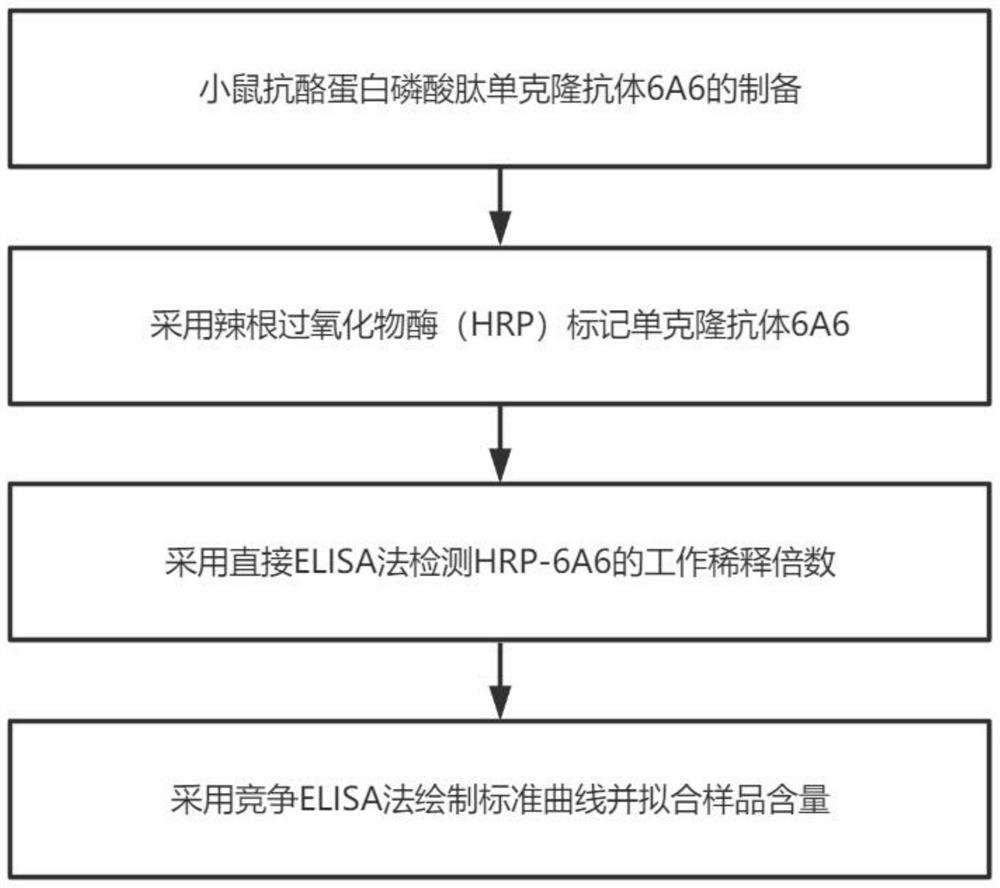Immunological detection method for content of casein phosphopeptides in infant formula milk powder
A casein phosphopeptide, infant formula technology, applied in the field of biological and immunological detection, can solve the problems of comprehensive detection results, rough segmentation, poor versatility, expensive equipment and other problems, and achieve fast and high-throughput detection , to achieve the effect of high-throughput detection
- Summary
- Abstract
- Description
- Claims
- Application Information
AI Technical Summary
Problems solved by technology
Method used
Image
Examples
Embodiment 1
[0026] see figure 1 , the present invention provides a technical solution: an immunological detection method for casein phosphopeptide content in infant formula milk powder, comprising the following steps:
[0027] S1: Preparation of mouse anti-casein phosphopeptide monoclonal antibody 6A6;
[0028] S2: using horseradish peroxidase (HRP) to label monoclonal antibody 6A6;
[0029] S3: Use the direct ELISA method to detect the working dilution factor of HRP-6A6;
[0030] S4: Competitive ELISA method was used to draw a standard curve and fit the sample content.
[0031] In S1, the preparation of mouse anti-casein phosphopeptide monoclonal antibody 6A6 includes immunization of mice, establishment of hybridoma cell lines, mass production of monoclonal antibody 6A6 and purification of ascites 6A6. The preparation method of immunization mice includes: First synthesize a polypeptide and name it CPP1. After the polypeptide is coupled with BSA, it is used as an immunogen to immunize ...
PUM
 Login to View More
Login to View More Abstract
Description
Claims
Application Information
 Login to View More
Login to View More - R&D
- Intellectual Property
- Life Sciences
- Materials
- Tech Scout
- Unparalleled Data Quality
- Higher Quality Content
- 60% Fewer Hallucinations
Browse by: Latest US Patents, China's latest patents, Technical Efficacy Thesaurus, Application Domain, Technology Topic, Popular Technical Reports.
© 2025 PatSnap. All rights reserved.Legal|Privacy policy|Modern Slavery Act Transparency Statement|Sitemap|About US| Contact US: help@patsnap.com

